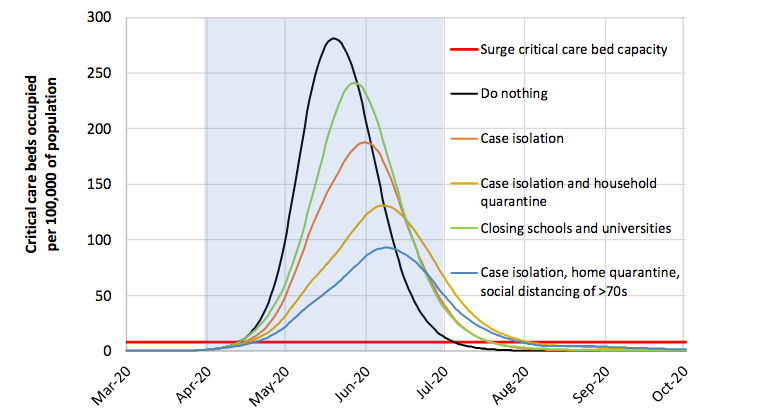A recent report from the Imperial College of London modeled three scenarios for how the COVID-19 pandemic could unfold.
The model’s results showcase starkly different outcomes the United States, and the world, could face depending on how officials react to the virus.
The authors write:
Overall, our results suggest that population-wide social distancing applied to the population as a whole would have the largest impact; and in combination with other interventions–notably home isolation of cases and school and university closure –has the potential to suppress transmission below the threshold of R=1 required to rapidly reduce case incidence. A minimum policy for effective suppression is therefore population-wide social distancing combined with home isolation of cases and school and university closure.
To avoid a rebound in transmission, these policies will need to be maintained until large stocks of vaccine are available to immunise the population–which could be 18 months or more.Adaptive hospital surveillance-based triggers for switching on and off population-wide social distancing and school closure offer greater robustness to uncertainty than fixed duration interventions and can be adapted for regional use (e.g. at the state level in the US). Given local epidemics are not perfectly synchronised, local policies are also more efficient and can achieve comparable levels of suppression to national policies while being in force for a slightly smaller proportion of the time. However, we estimate that for a national GB policy, social distancingwould need to be in force for at least 2/3of the time(for R0=2.4, see Table 4)until a vaccine was available.


